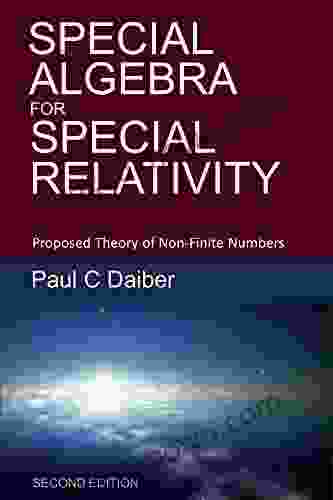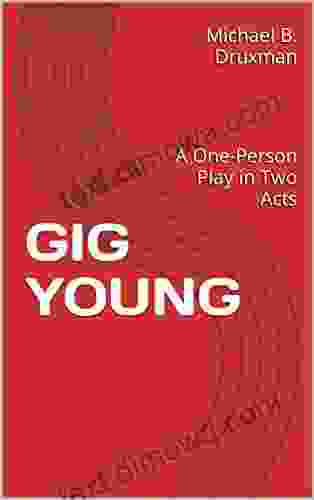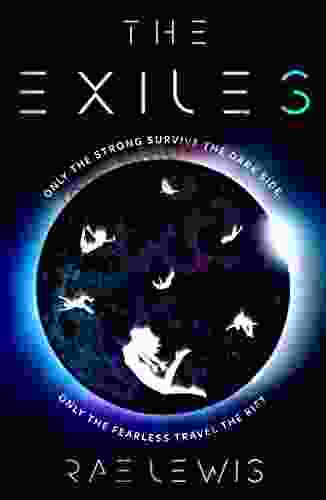Unlock the Secrets of Infinity with the Proposed Theory of Non-Finite Numbers

The concept of infinity has captivated the minds of mathematicians, philosophers, and scientists for centuries. From the ancient Greeks to modern-day physicists, the pursuit of understanding infinity has led to groundbreaking discoveries and profound insights into the nature of the universe. However, despite centuries of exploration, the true nature of infinity remains elusive, shrouded in mystery and paradox.
In this article, we delve into the Proposed Theory of Non-Finite Numbers, a groundbreaking new theory that challenges our conventional understanding of infinity. This innovative theory proposes that infinity is not a single, fixed entity but rather a vast and complex realm of non-finite numbers, each possessing unique properties and behaviors.
Our traditional understanding of infinity is based on the concept of a "completed infinity," a limitless quantity that can never be reached or surpassed. However, this concept leads to paradoxes and contradictions that have puzzled mathematicians for generations. For example, consider the following paradox:
5 out of 5
| Language | : | English |
| File size | : | 8050 KB |
| Screen Reader | : | Supported |
| Print length | : | 328 pages |
| Lending | : | Enabled |
| Paperback | : | 68 pages |
| Item Weight | : | 6.6 ounces |
| Dimensions | : | 7 x 0.17 x 10 inches |
If we have an infinite set of numbers, we can create a new set by adding 1 to each number. According to the completed infinity concept, both sets should be infinite. However, the new set is "greater" than the original set, which contradicts the idea that infinity cannot be surpassed.
The Proposed Theory of Non-Finite Numbers resolves these paradoxes by introducing the concept of non-finite numbers. Non-finite numbers are numbers that lie beyond the traditional notion of infinity. They are not subject to the limitations of completed infinity and can exist in a variety of forms that challenge our conventional understanding of number systems.
According to the theory, non-finite numbers can be classified into different types, each with its own unique properties. These types include:
Unbounded Non-Finite Numbers: These numbers increase without limit as we move along the number line. For example, the number e (the base of the natural logarithm) is an unbounded non-finite number.
Transitive Non-Finite Numbers: These numbers can "jump" over other numbers on the number line. For example, the number ω (the smallest ordinal number greater than all finite ordinals) is a transitive non-finite number.
Indefinite Non-Finite Numbers: These numbers are not bounded above or below and can fluctuate in size. For example, the number π (the ratio of a circle's circumference to its diameter) is an indefinite non-finite number.
The Proposed Theory of Non-Finite Numbers has profound implications for a wide range of fields, including mathematics, physics, and computer science. By expanding our understanding of infinity, this theory opens up new avenues of exploration and innovation.
In mathematics, non-finite numbers can be used to solve previously unsolvable problems and provide new insights into the foundations of mathematics. For example, the theory can help us to better understand the behavior of infinite sets and the nature of continuity.
In physics, non-finite numbers can be used to model phenomena that involve unbounded or indefinitely fluctuating quantities. For example, the theory can help us to better understand the behavior of black holes and the expansion of the universe.
In computer science, non-finite numbers can be used to develop new algorithms and data structures that can handle infinite or indefinitely large datasets. For example, the theory can help us to develop new ways of storing and processing big data.
The Proposed Theory of Non-Finite Numbers is a groundbreaking new theory that challenges our conventional understanding of infinity. By introducing the concept of non-finite numbers, this theory provides a framework for understanding the paradoxes and contradictions that surround infinity and opens up new avenues of exploration in mathematics, physics, and computer science.
As we continue to explore the mysteries of infinity, the Proposed Theory of Non-Finite Numbers will serve as a guiding light, illuminating the path towards a deeper understanding of this enigmatic concept.
5 out of 5
| Language | : | English |
| File size | : | 8050 KB |
| Screen Reader | : | Supported |
| Print length | : | 328 pages |
| Lending | : | Enabled |
| Paperback | : | 68 pages |
| Item Weight | : | 6.6 ounces |
| Dimensions | : | 7 x 0.17 x 10 inches |
Do you want to contribute by writing guest posts on this blog?
Please contact us and send us a resume of previous articles that you have written.
 Book
Book Novel
Novel Page
Page Chapter
Chapter Text
Text Story
Story Genre
Genre Reader
Reader Library
Library Paperback
Paperback E-book
E-book Magazine
Magazine Newspaper
Newspaper Paragraph
Paragraph Sentence
Sentence Bookmark
Bookmark Shelf
Shelf Glossary
Glossary Bibliography
Bibliography Foreword
Foreword Preface
Preface Synopsis
Synopsis Annotation
Annotation Footnote
Footnote Manuscript
Manuscript Scroll
Scroll Codex
Codex Tome
Tome Bestseller
Bestseller Classics
Classics Library card
Library card Narrative
Narrative Biography
Biography Autobiography
Autobiography Memoir
Memoir Reference
Reference Encyclopedia
Encyclopedia Marilyn Yalom
Marilyn Yalom Sheila Wood Foard
Sheila Wood Foard Sachin Kumar
Sachin Kumar Mark Franko
Mark Franko Miranda Yearwood Brumbaugh
Miranda Yearwood Brumbaugh Umberto Miletto
Umberto Miletto Mindy Mcginnis
Mindy Mcginnis Matthew Rolnick
Matthew Rolnick Melanie Metzenthin
Melanie Metzenthin Rae Dunn
Rae Dunn Richard Bangs
Richard Bangs S J Dahlstrom
S J Dahlstrom Cassandra Boyson
Cassandra Boyson Ricco Villanueva Siasoco
Ricco Villanueva Siasoco Maria Youtman
Maria Youtman Mark Sennen
Mark Sennen Michael Mcgarrity
Michael Mcgarrity Peter Ballin
Peter Ballin Robert J Andreach
Robert J Andreach Martin Lindstrom
Martin Lindstrom
Light bulbAdvertise smarter! Our strategic ad space ensures maximum exposure. Reserve your spot today!
 Dale MitchellFollow ·2.3k
Dale MitchellFollow ·2.3k Ted SimmonsFollow ·12.8k
Ted SimmonsFollow ·12.8k Orson Scott CardFollow ·18.6k
Orson Scott CardFollow ·18.6k Richard WrightFollow ·15.2k
Richard WrightFollow ·15.2k Lee SimmonsFollow ·6.6k
Lee SimmonsFollow ·6.6k John SteinbeckFollow ·18.1k
John SteinbeckFollow ·18.1k Chadwick PowellFollow ·18k
Chadwick PowellFollow ·18k Anton ChekhovFollow ·2.3k
Anton ChekhovFollow ·2.3k

 Boris Pasternak
Boris PasternakThree Walking: An Immersive Journey into the Heart of...
Immerse yourself in the...

 Connor Mitchell
Connor MitchellUnveiling the Secrets of Archery: Discover "Learnt It...
Archery, an...

 Craig Blair
Craig BlairUnveiling the Secrets of Success: Arrogance Millz Day
Are you ready to unlock...

 Damon Hayes
Damon HayesThe Diary and Letters of America's Minister to France...
In the year 1870, as the...

 Hector Blair
Hector BlairCapoeira: A Journey Through History, Culture, and the...
Origins and...
5 out of 5
| Language | : | English |
| File size | : | 8050 KB |
| Screen Reader | : | Supported |
| Print length | : | 328 pages |
| Lending | : | Enabled |
| Paperback | : | 68 pages |
| Item Weight | : | 6.6 ounces |
| Dimensions | : | 7 x 0.17 x 10 inches |














